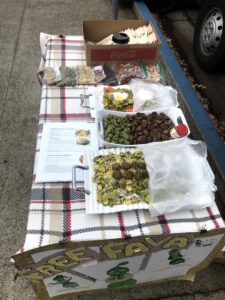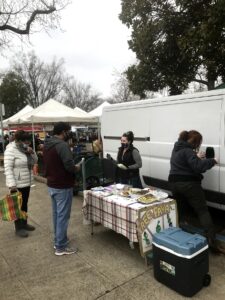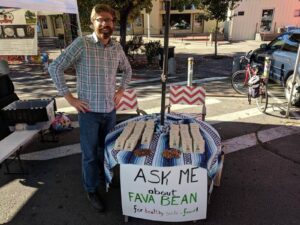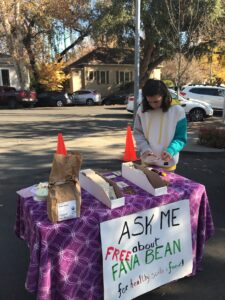Progress report for SW19-902
Project Information
The benefits of cover crops to soil health and environment are well understood. However, socio-economic limitations such as costs of cover cropping and lack of general knowledge about its long-term benefits limit this sustainable farming practice. Especially in California where suitable weather allows year-round cash crop production, cover cropping does not seem profitable for most growers. Alternatively, winter cash crops that provide ground cover and improve soil organic matter and nitrogen (N) can serve as cover crop while incorporating to growers’ income. In this project, we aimed to promote autumn-sown faba bean as a vegetable crop, which could also provide the benefits of winter cover crops. Faba bean is widely grown around the world for its high-protein grains. In addition, faba bean leaves, fresh pods, and immature seeds are consumed in many dishes. Faba bean has high atmospheric N fixation and biomass production compared to many legume crops; therefore, its residues are known to incorporate to soil organic matter and N. The project included a field trial in Chico and Pomona, where pod production of five faba bean food varieties and their residual biomass and N were quantified, and a trial in Lockeford, where biomass and N accumulation of faba bean in response to termination time was studied. The project also included extensive outreach programs in the forms of 1) field day demonstration (virtual and at growers’ fields), 2) recipe and food development and demonstration at farmers' markets, 3) seed giveaways to multiple communities around California, 4) faba bean festival in Los Angeles area, and 5) providing faba bean educational materials to elementary schools. In addition, the project provided hands-on learning opportunities for undergraduate and graduate students, technicians, and researchers across CA to learn about faba bean. A total of 31 graduate and undergraduate students from multiple campuses were hired to work on the project, from whom the majority were supported to present at national and regional conferences and field day demonstrations. The project also employed 11 technicians, 2 professional chefs, and 6 researchers (Ph.D.), and involved 4 local growers, several researchers, volunteers, and schoolteachers who contributed to different aspects of the project’s outcomes.
- Quantifying pod production potentials of vegetable faba bean varieties, and N removal in harvested pods
- Measuring biomass production, N fixation, and residual biomass and N of vegetable faba bean after pod removal
- Educating California growers about the economic benefits of the fababean cover crop.
- Presenting foods made of faba bean fresh pods to the public to promote the consumption of faba bean as a healthy diet.
|
Yr |
Task |
Fall |
Winter |
Spring |
Summer |
Year |
|
Year 1 |
Land prep, planting and cultural practices |
X |
X |
|
|
2020 |
|
Data collection and sampling |
|
X |
X |
|
||
|
Field day presentations |
|
|
X |
|
||
|
Food demonstrations |
|
|
X |
X |
||
|
Sample and data analysis |
|
|
X |
X |
||
|
Year 2 |
Conference Presentations |
X |
X |
|
|
2021 |
|
Land prep, planting and cultural practices |
X |
X |
|
|
||
|
Data collection and sampling |
|
X |
X |
|
||
|
Field day presentations |
|
|
X |
|
||
|
Food demonstrations |
|
|
X |
X |
||
|
Sample and data analysis |
|
|
X |
X |
||
|
Year 3 |
Conference Presentations |
X |
X |
|
|
2022 |
|
Extracting and analyzing data |
|
X |
X |
|
||
|
Dissemination plans |
|
X |
X |
X |
||
|
Preparing and submitting paper (s) to peer review journals |
|
|
X |
X |
Cooperators
- - Technical Advisor (Educator and Researcher)
- - Technical Advisor (Educator and Researcher)
- - Technical Advisor (Educator and Researcher)
- (Educator)
- (Researcher)
- (Researcher)
- (Researcher)
- (Researcher)
- - Producer (Researcher)
- - Producer
Research
1- Fresh pods of fababean cover crop can produce additional income for growers
2- Harvesting fababean fresh pods affects the nitrogen benefits of fababean cover crop
Faba bean is widely grown as grain crop around the world, and in some regions as vegetable crop for its fresh pods and immature seeds. In California, vegetable faba bean is produced in small farms along the coast and in home gardens. The products are normally sold to distributors for local and out of state sales, and in local farmers markets. Despite the seasonal availability of vegetable faba bean in local markets in California and around the country, lack of information about cultural practices, potential pod yield, effects of faba bean on succeeding crops, and lack of knowledge about markets and consumptions of faba bean limit its production. For the research component of this WSARE grant, two field trials and two surveys were conducted to address some of the above-mentioned limitations.
- Fresh pod yield and residual biomass and nitrogen of five vegetable fababean varieties (Drs. Brasier, Fox, Mosqueda)
This field trial was conducted in three environments to measure fresh pod yield, N fixation, and residual biomass, and N of vegetable faba bean. The field trials were established in Chico in 2020 and 2021 growing seasons, and in Pomona in 2021 growing season. The trials had five large-seeded vegetable faba bean varieties: ‘Aguadulce’, ‘Grano Violetto’, ‘Masterpiece’, ‘Vroma’, and ‘Windsor’. The experiment also contained ‘Bell Bean’, a commonly grown cover crop faba bean variety.
Pods of the five vegetable varieties were subjected to two harvesting schemes of Single (one) and Multiple (three) harvests. The Single harvest and the first harvest of Multiple harvests took place in mid-April. Plots with Multiple harvests scheme were harvested again in early- and mid-May. Leftover biomass was sampled after the first pod removal (in Single harvest) and after the third pod removal (in Multiple harvests). Biomass was dried, weighed, ground, and processed for N and 15N composition analysis.
- Biomass, N fixation, and residual N of faba bean in response to termination time (Drs. Brasier and Smither-Kopperl, Ms. Bullard, and Mr. Vue)
Faba bean (Bell Bean) is a major component of winter cover crop mixes in California. Despite the cost and challenges of mixing this large-seed species with other cover crop species, growers and seed companies include Bell Bean in their mixes to enhance the N benefits of winter cover crops.
In a field trial, biomass production, N fixation, and N accumulation of ‘Bell Bean’ (commonly grown in cover crop mixes) and ‘Windsor’ (common vegetable variety) in response to termination times were measured. The trial was established at the USDA Natural Resources Conservation Service Plant Materials Center in Lockeford, CA in the 2020 growing season. The treatments included biomass sampling at branching, flowering, first-pod, and full-pod stages for dry mass, N, and 15N composition (to calculate N fixation). Each treatment (termination time and variety) was assigned to a single plot. After sampling, the entire plot was terminated, and crop residues were left on the soil surface until the last sampling at full-pod stage. In the end, the field was disked and sudangrass was planted in faba bean plots and sampled for biomass and total N.
- Consumer survey of home-made foods from faba bean pods and immature seeds (Dr. Giovanni and Ms. McAndrew)
The purpose of this research was to ascertain consumer knowledge about the use of faba bean and determine consumer interests in incorporating faba bean into their usual diet. Identifying the possible barriers associated with faba bean consumption could increase the likelihood of utilizing it in cooking at home. The research objectives were to:
- Introduce faba bean to consumers as a strategy to promote it as part of a healthy diet
- Assess consumer awareness, knowledge, and interest in faba bean
- Understand consumer acceptability and preferences of faba bean
- Determine how faba bean consumers purchase, prepare and consume it in home cooking
The study was carried out by visiting Chico’s farmers market and handing out faba bean seed, fresh or frozen faba bean pods, and our ‘Fava Bean Recipe Book’, and providing information about faba bean nutritional values to visitors. Visitors' names and email addresses were collected and the survey, which was constructed on Qualtrics, was emailed to the list.
- Faba bean marketing in California: Time of availability in farmers markets (Drs. Avetisyan and Hejazi)
The faba bean industry and market of California are unknown and vary among communities. Although faba bean pods are sold in CA local and farmers markets throughout the year, the origin, time of availability, and quantity of these products are unknown. This marketing survey aimed to map the CA farmers market where faba bean pods are sold to provide information to consumers about the place and time of pod availability at each market. The survey was distributed among 624 certified farmers' markets (as of April 1, 2022), which was obtained from the California Department of Food and Agriculture (CDFA) website. The survey was distributed to market managers via email and phone calls, from which 163 responses (26% of the list) were received.
Research 1- Fresh pod yield and residual nitrogen of five vegetable fababean varieties
The results of this field trial were published in the American Society for Horticultural Science. DOI: https://doi.org/10.21273/HORTSCI16843-22. The highlighted outcomes of this article are presented in Table 1 and Figure 1 and summarized below:
- Number of harvests affected total pod production and residual biomass and N of faba bean varieties.
- Averaged over three environments and five varieties, faba bean produced about 24,400, and 10,900 kg ha-1 (10.9 and 4.9 U.S. ton ac-1) fresh pod in single and multiple (three) harvests, respectively.
- Average dry mass residues after pod harvests were about 3,900 and 3,000 kg ha-1 (1.7 and 1.3 US ton ac-1) in single and multiple (three) harvests, respectively. In comparison, Bell Bean cover crop produced an average of 4500 kg ha-1 dry biomass.
- Pod harvests removed 36 and 62 kg ha-1 (32 and 55 lb ac-1) N from the field; yet residual biomass contained 99 and 91 kg N ha-1 (87 and 81 lb ac-1) in single and multiple (three) harvests, respectively. In comparison, the average residual N of Bell Bean over the environments at termination time was 120 kg N ha-1.
- Five vegetable faba varieties varied for the yield and time of maximum pod production.
- In the multiple harvest treatment, the highest average pod yield over three environments belonged to ‘Vroma’, which produced 38,928 kg ha-1 (15.4 US. ton ac-1) in three harvests.
- In the single harvest treatment, the highest average pod yield over three environments belonged to ‘Grano Violetto’ which produced 18,373 kg ha-1 (8.2 US. ton ac -1).
- ‘Grano Violetto’ and ‘Vroma’ were earlier than other varieties in terms of pod production. These two varieties produced 69 and 53% of their total production in the first harvest, respectively.
- ‘Aguadulce’ and ‘Windsor’ were late in terms of maximum pod production. Over 40% pod yield of these two varieties was harvested in the last harvest.
- Fresh pods of fall (early November) planted faba bean in California are ready to harvest by mid-April. The time of fresh pod harvest varied among different food varieties.
- Faba bean biological N fixation ranged from 39 to 74% among varieties, treatments, and environments. The atmospheric N fixation was independent of harvesting scheme treatments and varieties, but it was affected by environmental factors such as rain.
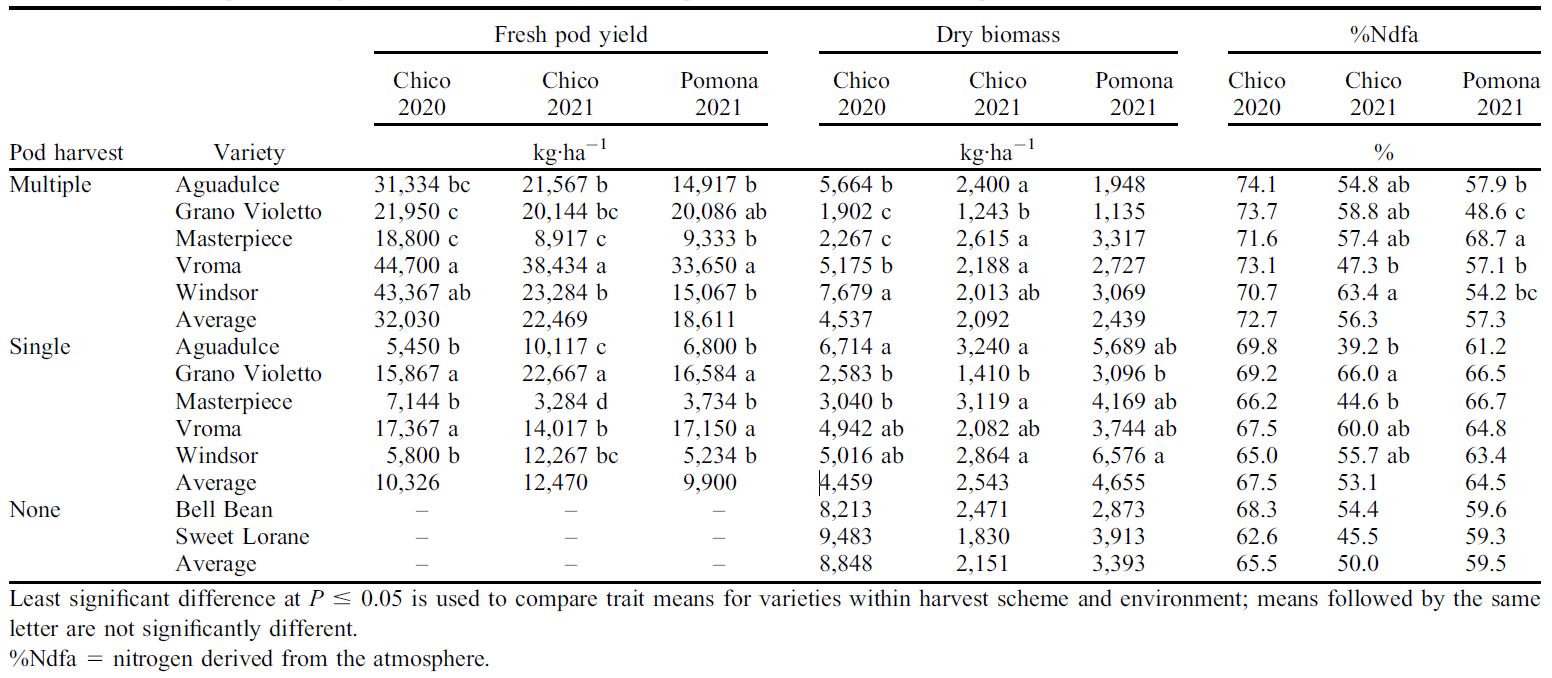
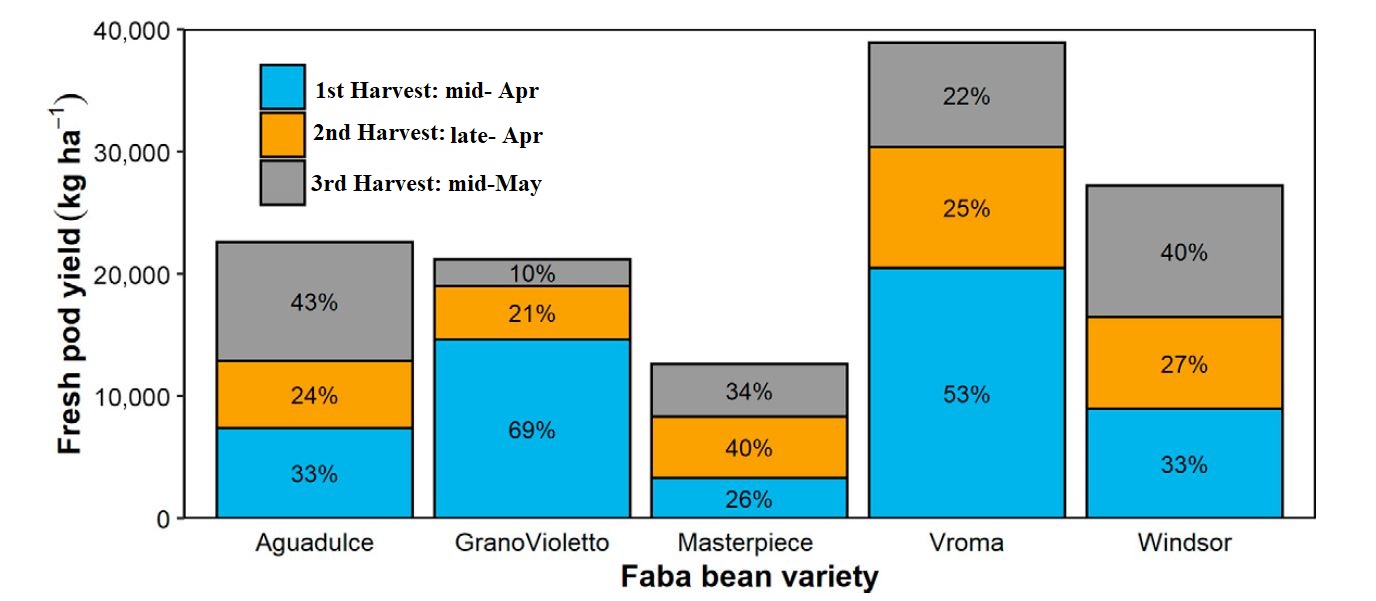
#######################################################################################################Research 2- Biomass, N fixation, and residual N of faba bean in response to termination time
Termination of faba bean at branching, flowering, first-pod, and full-pod stages affected biomass and N accumulation of faba bean. The results are presented in Figure 3 and summarized below:
- Dry Biomass: ‘Bell Bean’ accumulated 274, 1007, 1,725, and 4,713 kg ha-1 dry biomass, respectively. In comparison, ‘Windsor’ accumulated 817, 2,554, 3,658, and 5,738 kg ha-1 dry biomass, respectively.
- Nitrogen Fixation: ‘Bell Bean’ fixed 4, 14, 21, and 52 kg ha-1 N from atmospheric fixation, respectively. In comparison, ‘Windsor’ fixed 11,39,45 and 66 kg N ha-1 from the atmosphere.
- Effects on Subsequent Crop: Sudangrass produced 2166, 1958, 2708, and 2447 kg dry biomass ha-1 in the Bell Bean plots, and 1113, 876, 2781, and 2542 kg dry biomass ha-1in Windsor plots in response to termination of faba bean at branching, flowering, first pod, and full-pod stages. The results suggested that the faba bean benefits as cover crop are maximized at the first-pod stage. Windsor produced more biomass and had more residual N than Bell Bean.
 Figure 2- Average dry biomass and BNF (biological N Fixation) of Bell Bean and Windsor in response to termination at branching, flowering, first-pod, and full-pod in Lockeford, CA
Figure 2- Average dry biomass and BNF (biological N Fixation) of Bell Bean and Windsor in response to termination at branching, flowering, first-pod, and full-pod in Lockeford, CA
###############################################################################################
Research 3- Consumer survey of home-made foods from faba bean pods and immature seeds
The participants had diverse ages, and dietary patterns and the majority prepared dinner at home 5-7 times a week.
- Fava bean awareness: The majority of respondents claimed they had eaten faba bean at least once; however, most did not eat faba bean regularly. Types of consumed faba bean were fresh and canned. The majority of those who made food from faba bean immature seeds, removed the seed coat before cooking it.
- Likelihood of consuming faba bean: The respondents are likely to order faba bean in restaurants if it’s on the menu. For homemade dishes, the majority prefer to split the seed. Lastly, participants were not likely to grow their own faba bean. A large group of people who visited us in the farmers market inquired about a simple cultivation manual for growing faba bean in the garden.
###############################################################################################
Research 4- Faba bean marketing in California: Time of availability in farmers markets
- Faba bean markets map: The survey identified 76 California farmers markets that offer fresh faba bean pods. The survey results were used to create a comprehensive map containing the address and months of availability of faba bean pods and the number of active vendors at each market. A visual snapshot of the map is presented in Figure 3. The majority of the identified farmers markets are located along the coast, where favorable climate allows for year-round faba bean production. With 41 active vendors in 11 different markets, Los Angeles County had the highest number of farmers markets that sell faba bean pods. In Sacramento County, fresh faba bean pods are available at 2 farmers markets, with a total of 6 vendors. In addition to weather, the distribution of faba bean pod availability in farmers markets in these areas could be associated with demographic and cultural variations.
- Time of pod availability: The survey findings showed that while most farmers markets offer fresh faba bean pods during the spring and summer months, the availability of this product varies across California farmers markets (Figure 4). For example, 46 out of the 76 surveyed markets (61%) offered fresh faba bean pods in May. While none of the farmers markets were found to sell fresh pods in January, a small number of markets continued to offer this product throughout the winter season
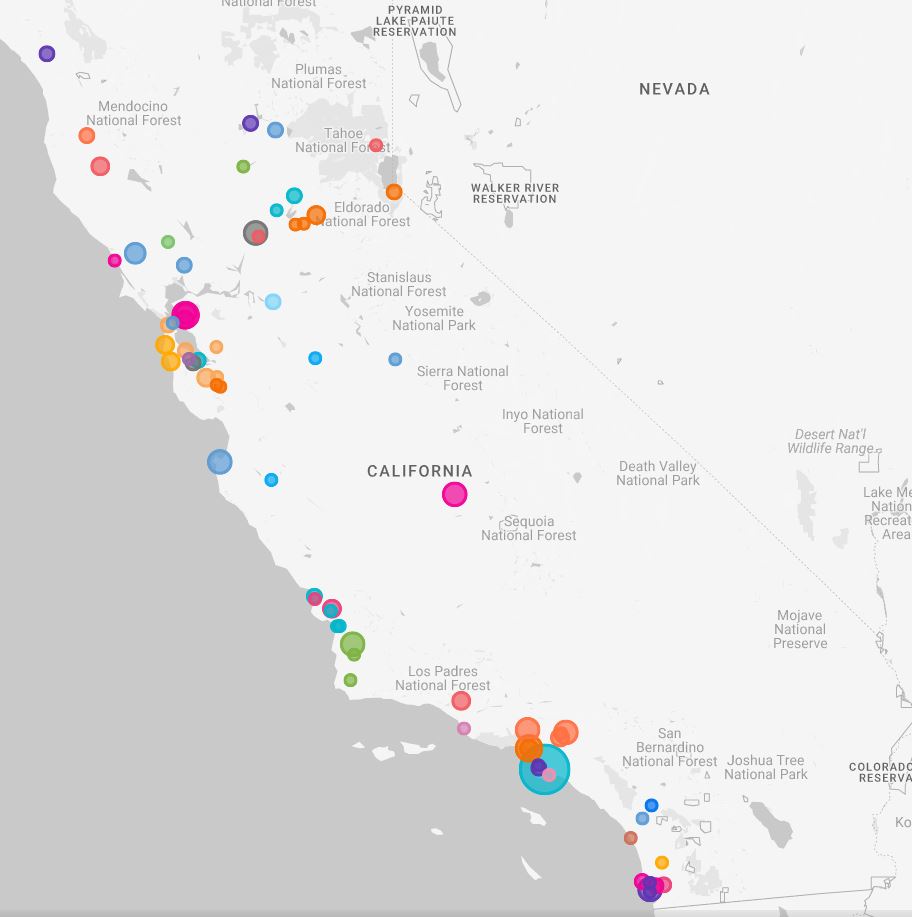
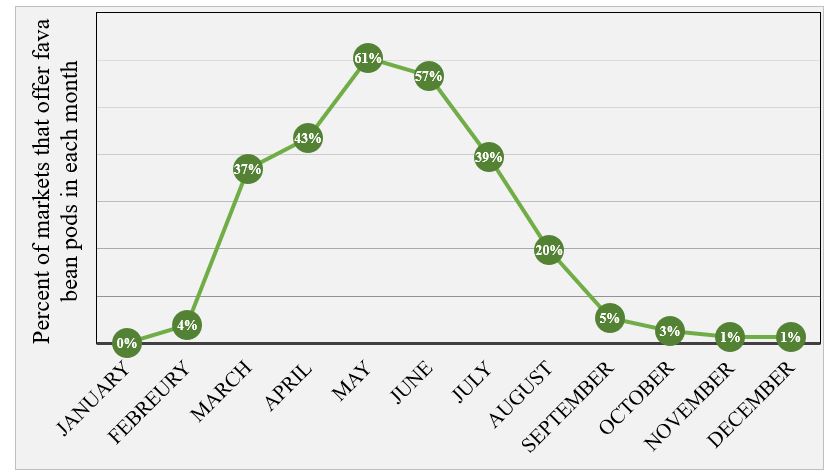
- Fava bean has great potential as a winter crop in northern California. Considering that most of the faba bean growth and yield formation cycle occurs during the rainy season, this crop can be grown with limited irrigation
- In general, faba bean is planted right before the rain on November across California. The fall planted faba produces pods at mid to late April. Earlier planting times, e.g., September, results in earlier pod harvest and higher fresh pods; however, they require one or more irrigation at planting.
- Faba bean is gaining popularity in California for both cover crop and food. Our surveys and interactions with people at farmer's market and other outreach events suggest that they are very interested to learn about and use faba.
Research outcomes
- Relatively small size farms in California together with the lack of planting and harvesting equipment limit the growing of faba bean as grain crop. However, fall-planted vegetable faba can easily fit into most rotations in California and similar climates.
- In northern California (and similar climates), vegetable faba can easily replace the winter fallow or winter cover crop to generate income for growers. The crop is planted at the beginning of the rainy season in the fall and harvested in May. The residues decompose really fast and land becomes available for a summer crop.
- Compared to some legume crops, vegetable faba bean is easier and less expensive to grow. We grew vegetable faba (and vegetable chickpea) between rows of young orchards (alley cropping). Faba produced massive biomass and a significantly high yield compared to chickpea. However, both of these cool-season legumes needed minimum irrigation compared to dry bean (which the farmer grow). Besides, the land becomes available for a summer crop after removing pods from faba and chickpea.
- Our interactions with people in different communities indicated a significant interest in growing and consuming vegetable faba bean, both for home and commercial uses.
To promote vegetable faba bean in California (and in the country), we suggest addressing the followings in future research:
-
- Shucking and Peeling: Removing the pod shell and seed coat from vegetable faba is time-consuming and expensive, which limits its use in cooking. Investing in equipment that automates seed processing would increase its consumption in home cooking, restaurants, and the packing and canning industry.
- International Markets: Vegetable faba consumption is common in some countries. Along with educating US consumers and industry about faba bean pods, identifying international markets for the product will help promoting it. Our study showed that vegetable faba produces a comparable pod yield as many vegetables. It can be a profitable vegetable crop if CA growers have access to sustainable markets. Identifying countries and international markets will encourage distributors to invest in shipping faba to those destinations. I attended the Pulse Canada Convention with the hope of connecting to distributors and shipping companies for fresh faba bean, but I found that, unfortunately, none exists so far.
- Black Aphid is a major concern in faba bean production. In a recent field day, an organic grower shared the experience of introducing black aphids to his farm by growing a cover crop mix that had faba. Similarly, black aphid is a major pest for gardeners and small farm growers Investigating approaches that reduce aphid pressure will help promoting its cultivation.
- Low Vicine and Convicine: Favism is a major barrier to faba bean consumption. Favism is caused by the presence of vicine and convicine in the seed. Long-term breeding efforts have gradually yielded faba varieties that are claimed to have less of these two compounds compared to traditional faba varieties. However, the current focus is on grain production varieties (small and medium seed). Investing in developing low vicine and convicine vegetable varieties, and investigating approaches that can reduce the concentrations of these two compounds in the final product can help remove a major barrier in using faba bean as food.
- Seed Production: despite the diverse collection of faba bean vegetable varieties, we found it difficult to find seeds for all of them. Only seeds of one or two varieties are sold in large quantities. Promoting seed production of vegetable faba bean varieties can encourage growers to adopt the crop in cropping systems. For example, our study suggested that growing multiple varieties that differ in pod production time can increase the duration of pod production.
- Education: Through interactions with people at farmers markets and seed giveaway events, we learned that a significant knowledge gap exists among people. Educating the public about faba bean food diversity, nutritional benefits, and cultivation practices can incorporate in promoting it. Our seed and fresh-pod giveaway efforts, and development of a recipe book and cultivation guide are some of our efforts in educating people about this crop.
Education and Outreach
2- Fava Bean Cultivation Guide
Participation summary:
Growers Collaborators
Maciel Farms, Gridley, CA:
- 2020: The farms grew about 1 ac faba bean to quantify yield, cost of production, and economic benefits of faba beans fresh pods. Unfortunately, we had to terminate the crop due to the lack of labor for harvesting, and lack of demands due to the COVID19 pandemic.
- 2022: The farm grew about 1/4 an ac faba bean to quantify the yield and economic benefits of faba bean fresh pod production.
Kimmelshue Farm. Durham, CA
- 2021: the farm grew about 0.5 ac faba bean between rows of a young orchard to test the feasibility of growing vegetable fava between young orchards as alley cropping. The results were satisfactory.
- 2022: the farm grew about 0.5 ac faba bean between rows of a young orchard to test the feasibility of growing vegetable fava between young orchards as alley cropping. The results were satisfactory.
Lundberg Family Farm- Richvale, CA
- 2020 and 2021: Lundberg Family Farm is an organic rice grower in northern California that grows cover crop mixes during winter. We sampled faba bean from the farm's winter cover crops and quantified the biological nitrogen fixation of faba bean in this unique cropping system.
Chico Flax- Chico - CA
- 2020 and 2021:We planted a food variety of faba bean at Chico Flax field to study the response of faba bean to soil N and demonstrate the crop to the community in their field days events
Jesus Center Farm - Chico, CA
- 2021: Jesus Center farm grows a variety of vegetables. We grew two faba bean food varieties at the farm to demonstrate winter faba bean as a rotational crop. The field also provided an opportunity to study faba bean response to rhizobia inoculation.
Sierra Nevada Brewery - Chico, CA
- 2021 and 2022: Sierra Nevada Brewery Farm is an organic farm in Chico. We planted three food varieties of faba bean in their field to demonstrate the crop’s potential benefits as food and cover crop. This collaboration encouraged the brewery to test the feasibility of incorporating faba bean flour in their beers.
Solano Canyon Community Garden, Los Angeles, CA
- 2021: Solano Garden planted several beds of faba bean o demonstrate food production and benefits of faba to soil organic matter and nitrogen to their members, and produce fresh pods for the faba bean festival.
Alemany Farm, San Francisco, CA
- 2021: Alemany Farm planted two beds of faba bean to demonstrate food production and the benefits of faba to soil organic matter and nitrogen.
Field Day Demonstrations
NRCS’s Plant Material Center, Lockeford, CA
- 2020: The termination study was presented to about 70 farmers, NPOs, seed companies, and other private businesses at the Lockeford PMC Cover Crop Field Day on March 5, 2020. The presentation included the potential of winter faba bean to build soil and support vegetable production in relation to faba variety, and planting and termination times.
- 2022: The diversity of faba bean varieties and their potential as food and cover crop was presented to about 70 growers, NPOs, and private businesses at the 2022 Lockeford Cover Crop and Soil Health Field Day on April 6, 2022.
Fava Bean Virtual Field Day
- In collaboration with the NRCS’s Plant Material Center at Lockeford, CA, Fava Bean Virtual Field Day was held on May 7, 2021. In a series of presentations, the latest update of our faba bean research was presented to about 75 audiences from the United States and Canada. Presentations included the adaptation of faba bean to the Western US, faba bean cover crop termination time, faba bean germplasm, decomposition rates of cover crops in the field, fresh pod production of faba bean, and faba bean dishes and recipes.
Chico Flax Field Day:
- The faba bean field trial at Chico flax was presented to about 75 audiences who attended the Chico Flax field day event on May 1st, 2021. The presentation included planting time and managing faba bean as food and cover crop in northern California. The audiences were from Chico and other CA communities.
Sacramento Valley Cover Crop Tour
- The potential of legume crops in California agroecosystems was presented to attendees of the Sacramento Valley Cover Crop Tour on March 3rd, 2022. The presentation included presenting the diversity of faba bean food and cover crop varieties seeds and the nitrogen benefits of faba bean in cover crop mixes.
Professional presentations
Oral Presentations:
- Brasier & Zakeri, Building better legumes for regenerative cropping systems, 2020 This Way to Sustainability Conference. March 26-27, Virtual. https://www.csuchico.edu/twts/session-descriptions.shtml#legumes.
- Zakeri & Brasier, Fava bean potentials as vegetable and cover crop in Western United States. 2021 ASA, CSSA, and SSSA Conference, Nov 7-10, Salt Lake City, UT. https://scisoc.confex.com/scisoc/2021am/meetingapp.cgi/Paper/132800
- Zakeri, et al., Potentials of legumes as food and cover crop in California’s cropping systems. 2022. California Plant and Soil Conference, Feb 1-3, Virtual. https://www.youtube.com/watch?v=0wYrHQ07Qys&t=10470s
- Brasier & Zakeri, Faba Bean Vegetable Production. 2022 ASA, CSSA, and SSSA Conference, Nov 6-9, Baltimore, MD https://scisoc.confex.com/scisoc/2022am/meetingapp.cgi/Paper/141572
Poster Presentations:
- Consuelo Baez Vega. 2020. Significance and Impact of Fababean As a Cover Crop, Whether Monocrop or Intercrop, in California Orchards. American Society of Agronomy Annual Meeting, Virtual
- Erik Spitzer. 2020. Fava Bean Harvesting Schemes for Yield and Soil Health. American Society of Agronomy Annual Meeting, Virtual >>
- Hunter Andrade. 2020. Effect of Nitrogen Rate on Fava Bean Yield and Biomass Production. American Society of Agronomy Annual Meeting, Virtual
- Hunter Andrade & Will Perez. 2020. The effect of nitrogen on pod production and biological nitrogen fixation in winter fava bean. California Plant & Soil Annual Meeting, Fresno, CA.
- Madeline McAndrew. 2020. Genotypic Variation for Vegetable Quality in Large-Seeded Fava Bean. American Society of Agronomy Annual Meeting, Virtual
- Madeline McAndrew. 2020. Nutritional benefits, concerns, and dietary uses of fava beans (Vicia faba) California Plant & Soil Annual Meeting, Fresno, CA.
- Steve Wallin. 2020. Effect of Cover Crop Fava Bean Variety and Termination Time on Forage Sudangrass. American Society of Agronomy Annual Meeting, Virtual
- Amelia Zepeda. 2021. The Effects of Termination Time on Faba Bean Biomass, Nitrogen Fixation and the Growth of Succeeding Crop in Rotation. American Society of Agronomy Annual Meeting, Salt Lake City, UT.
- Blaire Britten. 2021. Public and Professional Perception about the Importance of Fava Bean Cultivation in Northern California. American Society of Agronomy Annual Meeting, Salt Lake City, UT.
- Hope Coulter. 2021. Decomposition and Mineralization Rates of Fava Bean, Wheat, and Pea Cover Crops. American Society of Agronomy Annual Meeting, Salt Lake City, UT.
- Kim Holguin. 2021. The Effects of Inoculation on Yield and Nodulation of Faba Bean in Northern California. American Society of Agronomy Annual Meeting, Salt Lake City, UT.
- William Perez. 2021. The Effects of Nitrogen Fertilizer on Faba Bean Cover Crop Biomass Production and Nitrogen Fixation. American Society of Agronomy Annual Meeting, Salt Lake City, UT.
- Maia Crummett. 2022. Biomass and Nitrogen Fixation of Cowpea and Sunnhemp As Summer Cover Crops in Northern California. American Society of Agronomy Annual Meeting, Baltimore, MD. and 2023 CA Plant and Soil Conference, Fresno, CA
- Johana Jimenez. 2022. Nodulation of Pigeon Pea, Lab Lab, and Cowpea in Response to Different Rhizobia Strains. American Society of Agronomy Annual Meeting, Baltimore, MD.
- Peyton Arnold, 2023. Summer Cover Crops: Potentials as Forage and Possible Residual Impacts on Succeeding Crops. CA Plant and Soil Conference, Fresno, CA
Fava Bean Cultivation Guide
In a cultivation guide, we shared our experiences of growing faba bean in California. The guide targets small farms and gardeners who are interested in growing vegetable faba bean. The guide can be downloaded from the SARE or Favabeanreserach website
Fava Harvest Festival- Lydia Breen
Planet Earth Observatory (PEO) is a nonprofit organization in Los Angeles that works with urban gardeners, teachers, students, scientists, and artists to encourage experiential learning for healthy living. The organization has helped promoting faba bean as food and cover crop in the Los Angeles area. In the 2021-22 growing season, we worked with the PEO and Solano Canyon Community Garden to grow several beds of faba bean in their garden. On April 2nd, 2022, the PEO and Community Garden held the Fava Harvest Festival to show people how to harvest and shuck faba bean fresh pods, and demonstrate faba bean food to more than 70 audiences.
The Fava Bean Recipe Book- Lydia Breen
Planet Earth Observatory collected several food recipes and selected 19 recipes. They prepared dishes, tasted and photographed the dishes, and put together an amazing recipe book. The book was given to attendees of the Fava Harvest Festival and will be available online through the PEO, SARE, and Favabean Research websites. Fava Bean Recipe Book
The Fava Bean Zine- Lydia Breen
Planet Earth Observatory prepared the Fava Bean Zine, an educational material about faba bean, and distributed it along with Fava Bean Postcards and Fava Bean Buttons for elementary schools in the Los Angeles area.
Fava Bean Seed Giveaway
More than 3000 faba bean seed packs were given to people at multiple farmers' markets around California. The Planet Earth Observatory visited several farmers' markets around the LA area, distributed seeds, and educated people about the benefits of faba bean to soil. They also collected faba bean food recipes during their visits to the markets. In addition, Dr. Kyle Brasier (Research Manager) launched a community science project and shipped faba bean seeds to students and communities around California to grow and observe faba beans. Seed Giveaway
Fava Food Demonstration
We initially planned to prepare faba bean foods and survey people at Chico Farmers’ Market. However, due to the pandemic restrictions, we could only demonstrate faba bean foods to people at Chico's farmers market. In several visits foods made of faba bean were demonstrated to the farmers market visitors. In the last year of the project, when our recipe book was ready, food demonstrations were coupled with handing out our recipe book, a small sample of fresh faba pods, and a faba bean seed pack.
Newsletter
- The Western Farmer-Stockman published the "Take a run at alternative crops", which addresses the benefits of faba bean as food and cover crop.
- Cook's Illustrated published the "Creamy, Nutty Favas Are Spring's Best Bean", in an effort to promote faba bean consumption.
Website
- Dr. Brasier (Research Manager) developed the favabeanresearch website to promote faba bean cultivation and research
Market Development Approaches
1- Promoting Faba Bean in Restaurants
- We worked with the Grana (a local restaurant in Chico) to develop foods from faba bean and add it to their menu. They made Hummus and Ful Medames, which were served to about 200 customers.
2- Faba Bean Pod Availability in Farmers Markets - Survey
- A survey was conducted on California's farmers' markets to collect information on the seasonality of fresh Faba beans. The results were included in Fava Bean Cultivation Guide. The map of CA farmers markets where faba bean pod is sold, along with information about the number of vendors in each market and the time of product availability can be seen in this map
Education and Outreach Outcomes
- Faba bean seed diversity
- Faba bean dishes
- Cover crop planting and termination time
- Faba bean cultivation method
- Fava bean adaptation to Western US
- Inoculation of legume cover crops with rhizobia
